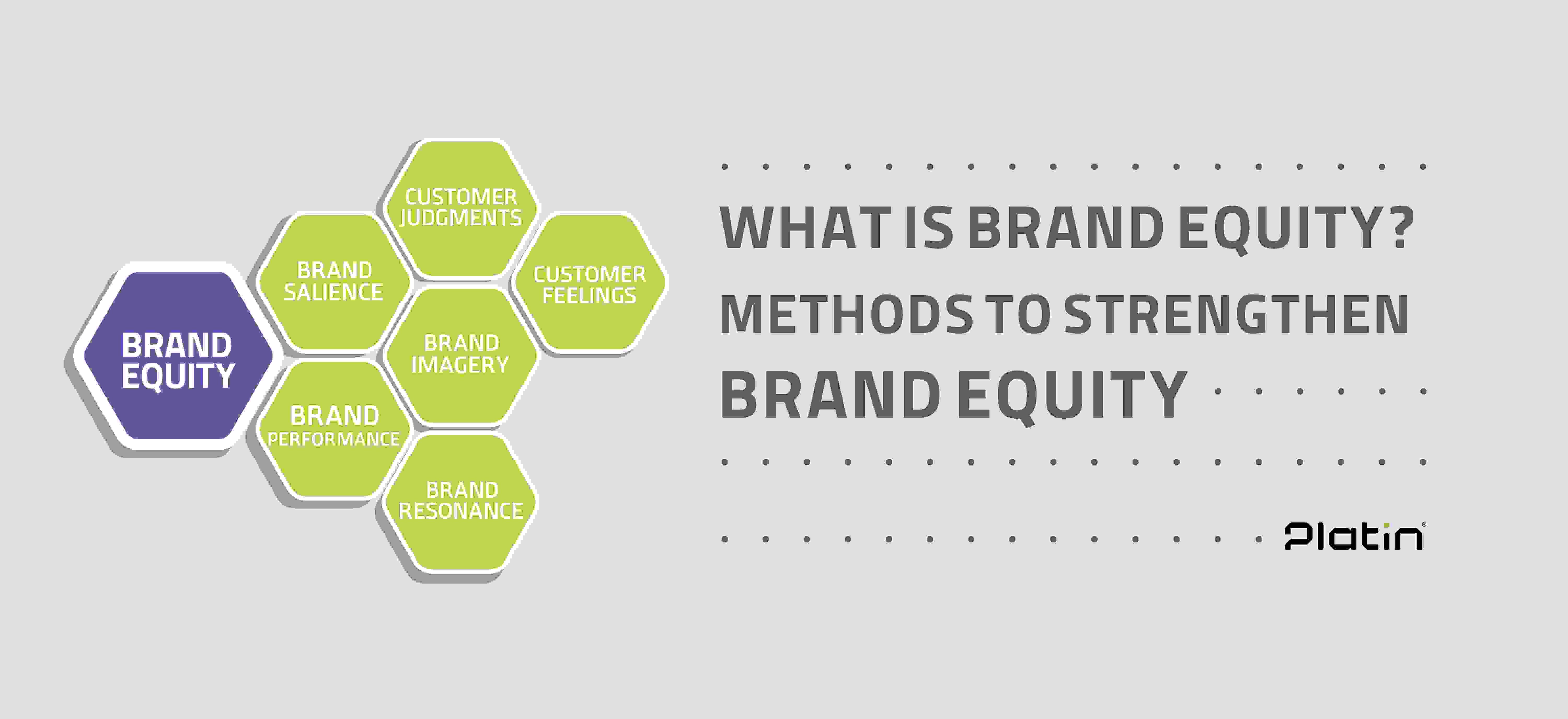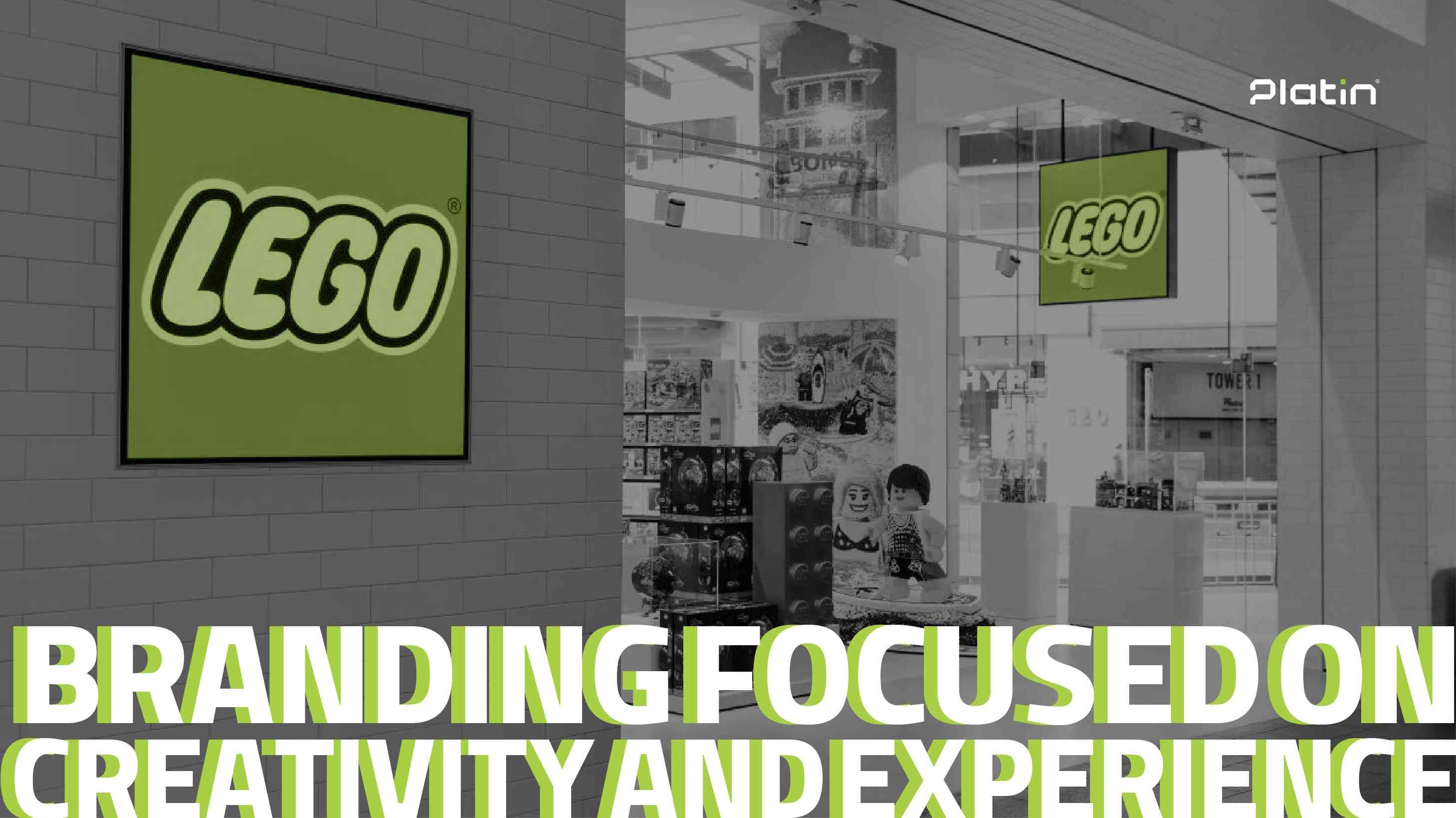What Is Brand Equity? Strategies to Strengthen Brand Value

Introduction
What makes a customer choose one brand over dozens of similar alternatives?
The reason often goes beyond price, packaging, or surface-level features. Behind this choice lies a powerful concept: brand equity — the perceived value a customer builds based on their experience, recognition, and mental associations with a brand.
Brands that successfully anchor themselves in the customer’s mind not only achieve higher sales, but also demonstrate stronger resilience against market fluctuations. By creating emotional connections, communicating consistently, and inspiring trust, these brands drive repeat purchases and ultimately become the customer’s first choice.
Understanding brand equity and the strategies that strengthen it is essential for any business seeking sustainable growth. In this Platin guide, we take a practical look at what makes a strong brand, how to elevate its perceived value, and what actions lead to real customer loyalty. If you want to know what brand value truly means and how to become the customer’s top choice in today’s crowded market, this article is for you.
What Is Brand Equity?
Brand equity refers to the value consumers assign to a brand based on perception, feelings, and personal experience. It goes far beyond product features or pricing; it is shaped through customer perception, credibility, and the quality expectations associated with the brand.
A brand that establishes a positive, consistent, and trustworthy image enjoys greater influence in purchase decisions. Such a brand is more recognizable, can command higher prices, and maintains loyalty even in competitive markets.
Brand Value vs. Brand Equity
Although the two terms sound similar, they represent different strategic concepts.
- Brand Value refers to the financial worth of the brand in the marketplace.
- Brand Equity refers to the perceived worth of the brand in the customer’s mind.
Long-term success requires strengthening both — the financial value of the brand and the emotional and perceptual value held by consumers.
Why Is Brand Equity Important?
When customers see a brand as more than a logo or name, the path to long-term growth becomes clearer and more stable. Brands with strong equity enjoy multiple advantages:
- Increased customer loyalty
- Lower price sensitivity
- Easier and more successful product extensions
- Sustainable competitive advantage
- Higher profitability and ROI
- Strong negotiation power with suppliers and partners
- Customer acquisition through word of mouth
- Greater resilience against market or media crises
Keller’s Brand Equity Model: Key Components
Kevin Lane Keller’s Customer-Based Brand Equity (CBBE) Model serves as a roadmap for building strong brands. It illustrates how brands can progress from basic awareness to deep loyalty and emotional resonance.
The model includes four stages and six core components:
- Brand Salience: Creating mental availability and top-of-mind recall at the moment of purchase.
- Brand Performance: How customers evaluate functionality, reliability, durability, and overall product performance.
- Brand Imagery: The emotional and symbolic associations a brand conveys, such as lifestyle, values, or cultural identity.
- Customer Judgments: How customers evaluate brand credibility, expertise, quality, and superiority.
- Customer Feelings: Emotional responses evoked by the brand, including trust, joy, excitement, or pride.
- Brand Resonance: The highest level of loyalty — where customers build an active, emotional, and long-term relationship with the brand.
How to Build and Strengthen Brand Equity: 8 Key Strategies
Strengthening brand equity is not only about awareness or visual identity; it requires structured planning, consistent execution, and continuous improvement in customer experience. Here are eight proven strategies:
1. Build Continuous Brand Awareness
Awareness is the gateway to entering the customer’s mind. Through targeted marketing, strong social media presence, SEO-driven content, and consistent visual identity, brands can strengthen recall and accelerate consideration.
Consistency in logo, colors, voice, and messaging plays a crucial role in making the brand easily recognizable and trustworthy.
2. Define a Clear Brand Positioning
Positioning determines how customers compare your brand to competitors.
Brands with clear, differentiated positioning are easier to remember and prefer.
This requires:
- Defining the customer persona
- Competitor analysis
- Crafting a unique and relevant value proposition
Positioning must align with the brand’s core values and the needs of the target audience.
3. Build a Positive Brand Image
Brand image evolves from customer experiences over time.
This can be shaped through storytelling, emotional branding, purpose-driven communication, and showcasing behind-the-scenes realities.
When customers sense that a brand stands for something meaningful, they form a lasting mental image of it.
4. Communicate Your Brand Values Clearly

Transparent and authentic communication of brand values builds credibility.
These values should be reflected in organizational behavior, customer communication, content tone, and product design.
Alignment between what the brand says and what it does is crucial for trust.
5. Create a Unified Customer Experience
Every touchpoint — website, customer service, packaging, delivery, after-sales support — shapes the customer journey.
A seamless, predictable, and enjoyable experience increases loyalty and strengthens brand equity.

6. Use Emotional Marketing
Purchasing decisions are strongly emotional.
Campaigns that evoke trust, pride, inspiration, or belonging move customers from awareness to loyalty.
Emotionally charged storytelling leaves a lasting imprint and enhances brand value.
7. Engage Actively With Your Audience
Brands that engage in two-way communication build deeper connection.
Responding to comments, addressing concerns, asking for feedback, participating in community conversations, and being socially present are all essential tactics.
Active engagement boosts attachment and retention.

8. Build an Effective Loyalty Program
Customers who feel appreciated are more likely to stay.
Through loyalty programs, exclusive rewards, personalized offers, and ongoing communication, brands can strengthen commitment and encourage repeat purchases.
Loyal customers not only drive revenue but also attract new customers through referrals.
Examples of Global Brands With Strong Brand Equity
Studying successful brands helps understand how brand equity transforms into long-term business value:
Apple: Innovation Paired With Seamless Experience
Apple’s strength lies not only in product design but in an integrated ecosystem and emotional connection. Customers willingly upgrade products despite high pricing — a clear sign of strong brand equity.
Nike: Branding Built on Motivation and Lifestyle
Nike doesn’t just sell sportswear; it sells ambition, achievement, and identity. Its storytelling-centered campaigns create deep emotional resonance.
Coca-Cola: Positive Emotions and Collective Memories
Coca-Cola is memorable because of the emotions it triggers: warmth, nostalgia, togetherness. Its consistent emotional messaging has created one of the world’s most recognizable brands.
LEGO: Creativity-Focused Brand Experience
LEGO goes beyond toys — it delivers creativity, storytelling, and cross-generational engagement. Its products, content, and experiences all reinforce the same brand promise.

Each of these brands transformed brand equity into a strategic asset through consistent execution, strong audience understanding, and experience-driven branding.
How to Measure Brand Equity
Brand valuation is more than a financial figure. It reveals real market position, customer perception, and revenue potential.
Here are the most commonly used approaches:
- Cost-Based Valuation: Based on total investment in building and maintaining the brand.
- Market-Based Valuation: Comparing the brand with similar brands in the market to estimate value.
- Income-Based Valuation: Estimating the brand’s contribution to profitability and future cash flows.
- Revenue Premium Model: Evaluating the price difference between a branded product and its non-branded equivalent.
- Customer-Based Valuation: Using loyalty, CLV, and customer volume to project long-term value.
- NPS (Net Promoter Score): Measuring how likely customers are to recommend the brand — a strong indicator of advocacy and word-of-mouth power.
Conclusion
A memorable brand is not built by design alone or through broad advertising.
It is built through consistent experience, emotional connection, trust, and long-term engagement.
Brand equity creates competitive advantage, drives sustainable growth, and increases customer lifetime value. With the right strategy, consumer insights, and disciplined execution, brand equity becomes one of the most valuable assets a business can own.
At Platin, we see brands as living, evolving assets. By understanding the market and customer personas deeply, we help businesses create enduring, measurable brand value.
If you are ready to elevate your brand’s position in the minds and hearts of your audience, our branding consultants are prepared to guide you.
FAQ
1. What is the difference between brand value and brand equity?
Brand equity refers to customer perception and emotional connection, while brand value focuses on financial valuation. Brand equity creates the foundation for strong financial brand value.
2. How can we increase our brand equity?
Through brand awareness, consistent customer experience, emotional engagement, and continuous interaction with the audience.
3. Can small businesses also build strong brand equity?
Yes. Even small businesses can develop meaningful and lasting value by maintaining quality, communicating effectively, and staying consistent.